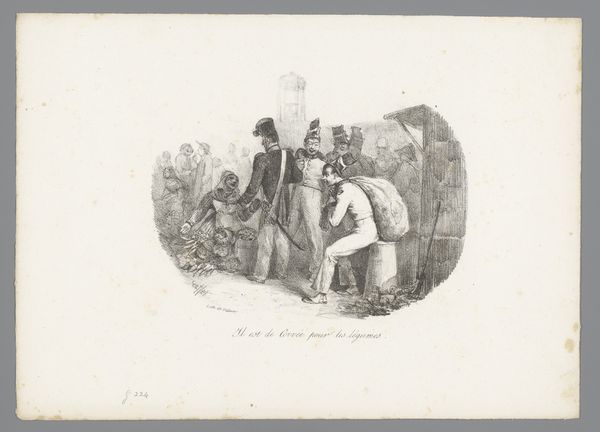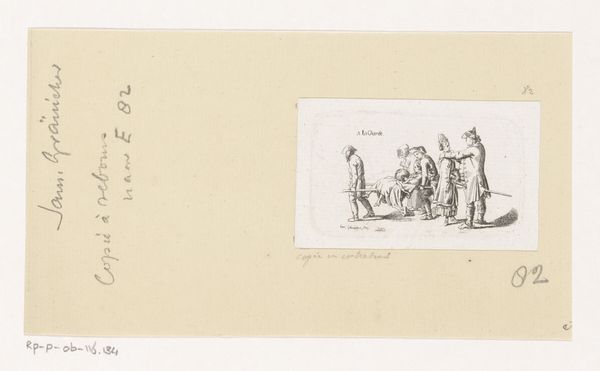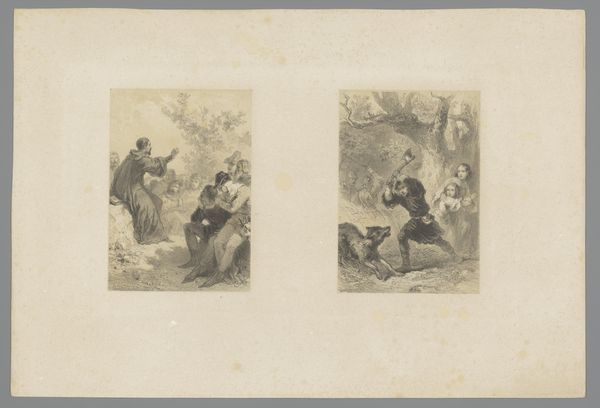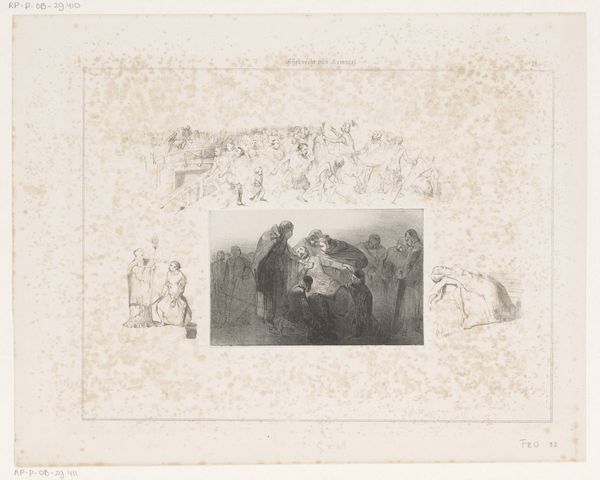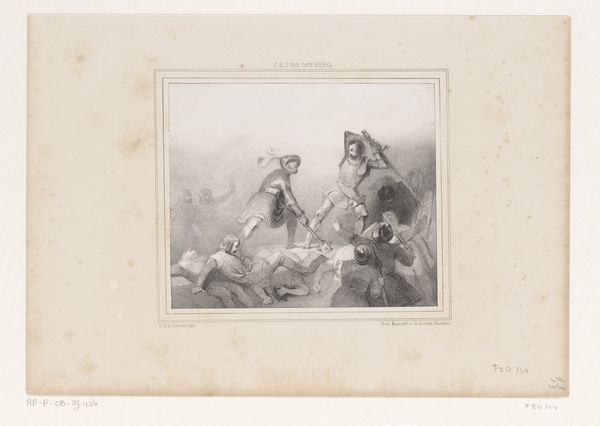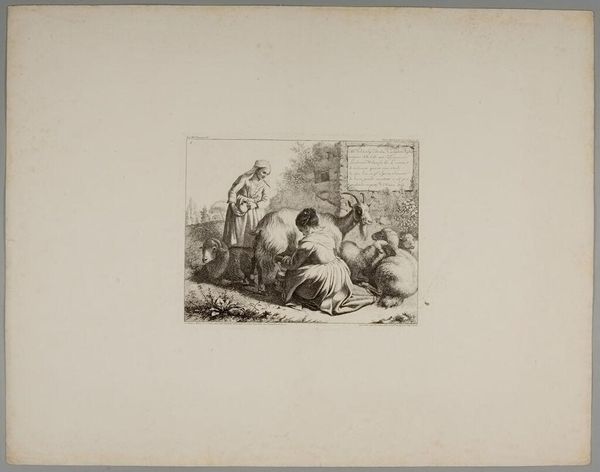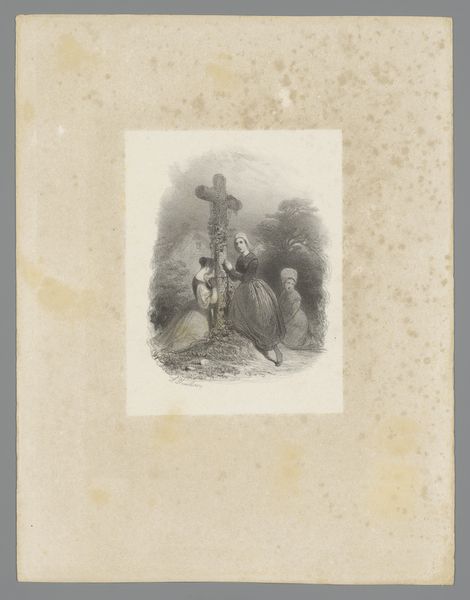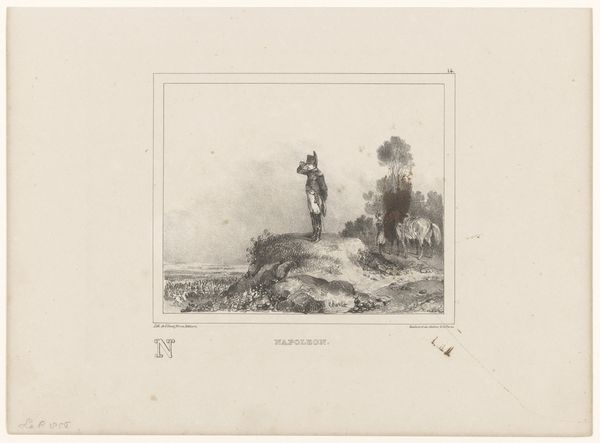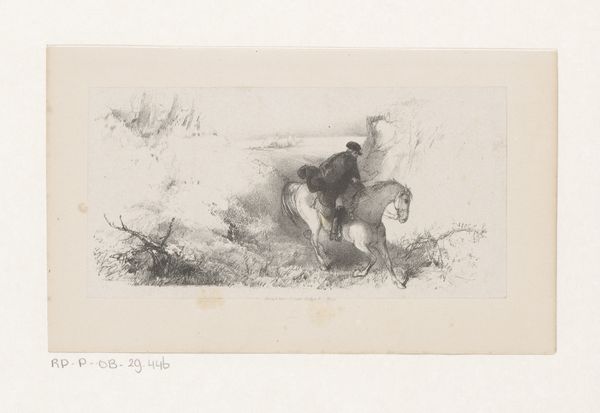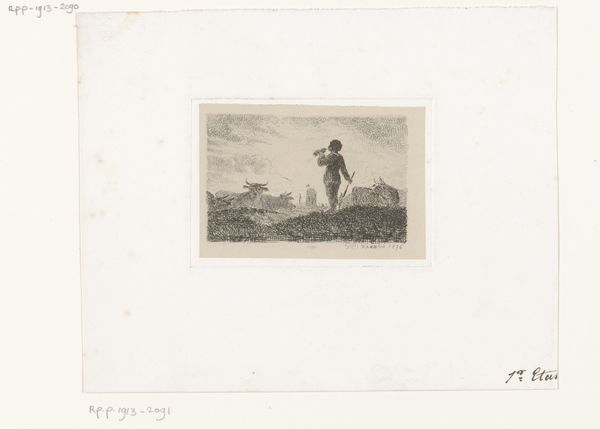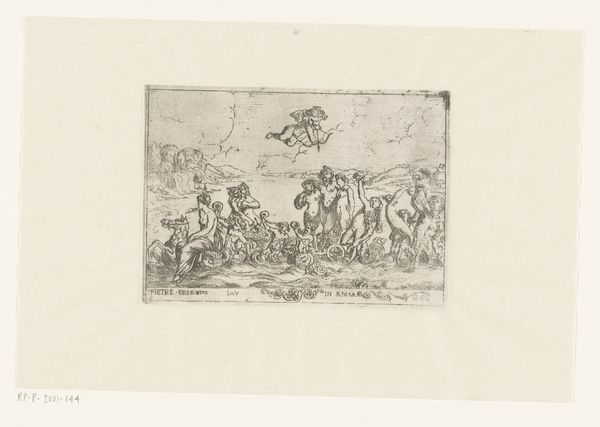
Soldaat houdt zijn sjako in de lucht, achter vechten soldaten met bajonet 1825
0:00
0:00
augusteraffet
Rijksmuseum
drawing, print, paper, ink, engraving
#
drawing
#
narrative-art
# print
#
figuration
#
paper
#
ink
#
romanticism
#
history-painting
#
engraving
Dimensions: height 359 mm, width 270 mm
Copyright: Rijks Museum: Open Domain
Curator: Let's turn our attention to Auguste Raffet’s print from 1825, currently held in the Rijksmuseum, titled "Soldaat houdt zijn sjako in de lucht, achter vechten soldaten met bajonet," or, "Soldier holds his shako in the air, behind soldiers fight with bayonet." Editor: The energy radiating from this image is intense! There's a palpable sense of both triumph and chaotic violence rendered through these incredibly fine lines. The lone soldier's gesture seems to be saying so much about victory and, perhaps, the illusion of control in warfare. Curator: Indeed. The central figure, hat aloft, is a powerful symbol of leadership and morale amidst the brutality of close combat. Note how Raffet captures the dynamism through a dense accumulation of figures. This engraving speaks to broader narratives of Romanticism and the fascination with the individual within history. What does the lifted hat mean beyond celebration? What does it mean for marginalized populations caught in wars fought on ideological claims they could not partake in? Editor: That lifted hat could also be read as a cultural symbol, a signifier for heroism in a very specific era. We’re trained, even now, to understand that raised object – whether a flag, a weapon, or in this case, a hat – as emblematic of sacrifice and the supposed glory of battle. It becomes a visual shorthand for complex socio-political ideologies about nationhood and power, masking the suffering of many behind the victory of a few. Curator: Precisely! Raffet's Romanticism needs to be carefully dissected to unearth whose voices are excluded. It becomes important to question which ideologies are further promoted when looking at work depicting soldiers and fighting with glory attached. Editor: And, artistically, the contrast between the triumphant foreground and the desperate, almost frantic action in the background, creates a compelling duality. The symbol is there, yes, but so is the violence, plain as day. Curator: Absolutely. Considering this work within the historical moment allows us to engage with ideas about national identity. This Romantic exaltation of the soldier raises some important questions concerning the normalization of militarism that we, to this day, are still in search of unravelling. Editor: I find myself caught between the immediate emotional impact of the scene and the deeper cultural narratives embedded within it. The symbol of the upraised hat is more complex, and fraught with conflict than it appears at first glance.
Comments
No comments
Be the first to comment and join the conversation on the ultimate creative platform.
